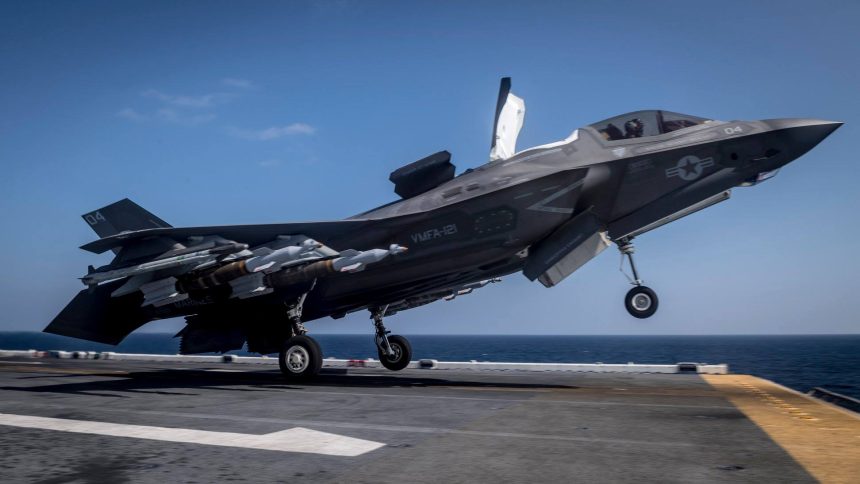Here are some shots of the F-35B operating at sea in “Bomb Truck” configuration.
F-35B Lightning II aircraft, attached to the F-35B detachment of the “Flying Tigers” of Marine Medium Tiltrotor Squadron (VMM) 262 (Reinforced), are currently in the Indo-Pacific region deployed aboard the amphibious assault ship USS Wasp (LHD 1).
Wasp, flagship of Wasp Amphibious Ready Group, with embarked 31st Marine Expeditionary Unit (MEU), is operating in the region “to enhance interoperability with partners and serve as a ready-response force for any type of contingency.”
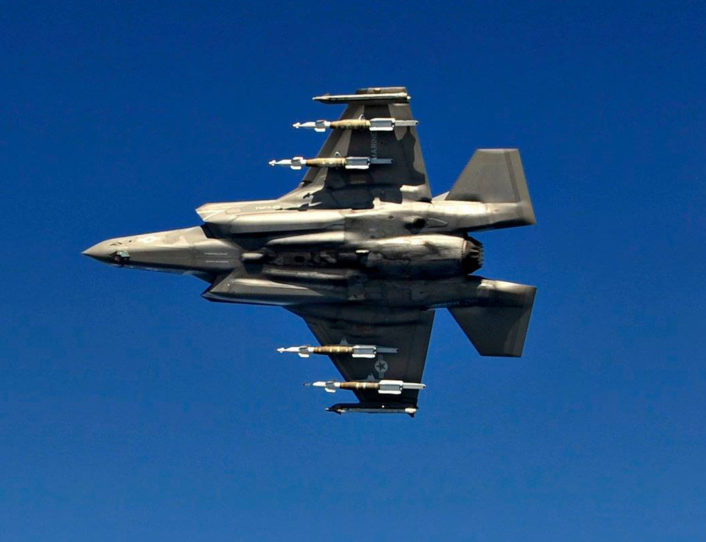
Images being released these days show the Marines STOVL (Short Take Off Vertical Landing) aircraft in VMFA-121 markings carrying external weapons during blue water ops, a configuration being tested for quite some time and known as CAS (Close Air Support) “Beast Mode” (or “Bomb Truck”).
In particular, the aircraft are loaded with 2x AIM-9X (on the outer pylons) and 4x GBU-12 500-lb LGB (Laser Guided Bombs).
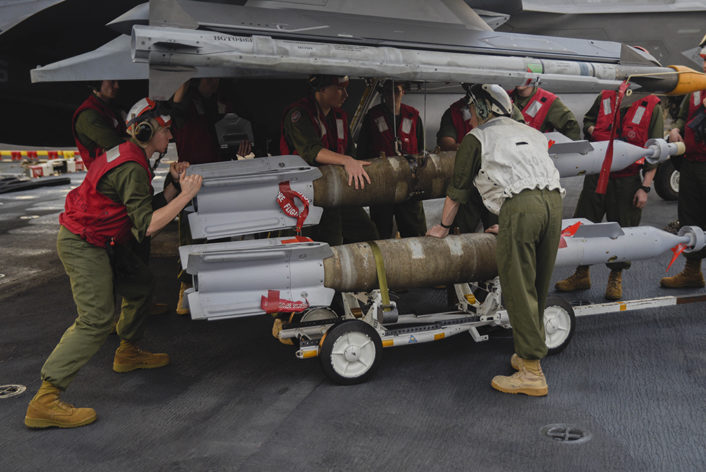
This configuration involving external loads is also referred to as a “Third Day of War” configuration as opposed to a “First Day of War” one in which the F-35 would carry weapons internally to maintain low radar cross-section and observability from sensors.
As we explained in a previous story: “as a conflict evolves and enemy air defense assets including sensors, air defense missile and gun systems and enemy aircraft are degraded by airstrikes (conducted also by F-35s in “Stealth Mode”) the environment becomes more permissive: in such a scenario the F-35 no longer relies on low-observable capabilities for survivability so it can shift to carrying large external loads.”
LO (Low Observability) is required for penetrating defended airspaces and knocking out defenses at the beginning of a conflict, but after the careful work of surface-to-air missile hunting is done (two, three days, who really knows?), the F-35 is expected to “go beast”.
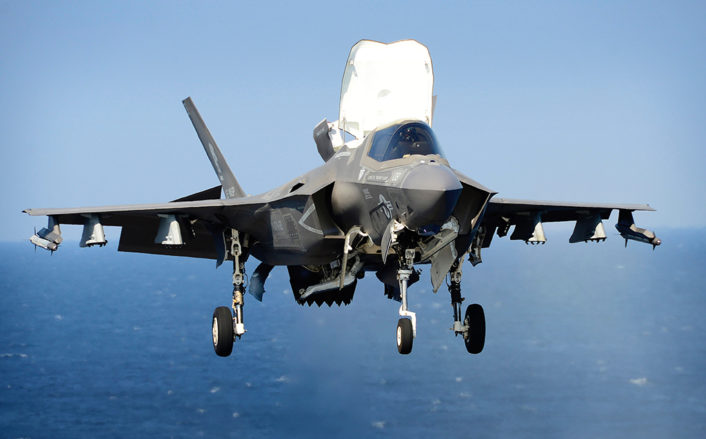
In “Beast Mode“, exploiting the internal weapon bays, the F-35A can carry 2x AIM-9X (external pylons), 2x AIM-120 AMRAAM (internal bomb bay) and 4x GBU-31 2,000-lb (pylons) and 2x GBU-31 PGMs (internal bay). It’s not clear whether the F-35B can launch from a Wasp-class amphibious assault ship in this configuration.
On Sept. 27, 2018, U.S. Marine Corps F-35B jets made their combat debut. U.S. Marine Fighter Attack Squadron 211, the “Wake Island Avengers”, of the 13th Marine Expeditionary Unit, used their F-35B Lighting II Joint Strike Fighters to hit insurgent targets in Afghanistan’s Kandahar Province launching from U.S. Navy Wasp-class amphibious assault ship USS Essex (LHD-2) on station in the Persian Gulf. The aircraft used in the strike were loaded with GBU-32 1000-lb JDAM (Joint Direct Attack Munitions) but were also equipped with the externally mounted GAU-22 25mm gun pod in addition to the weapons in the internal bays. And sported the radar reflectors too.
At least two aircraft, modex CF-00 and CF-01, made a stopover in Kandahar Air Field after the air strike, before returning to the aircraft carrier.
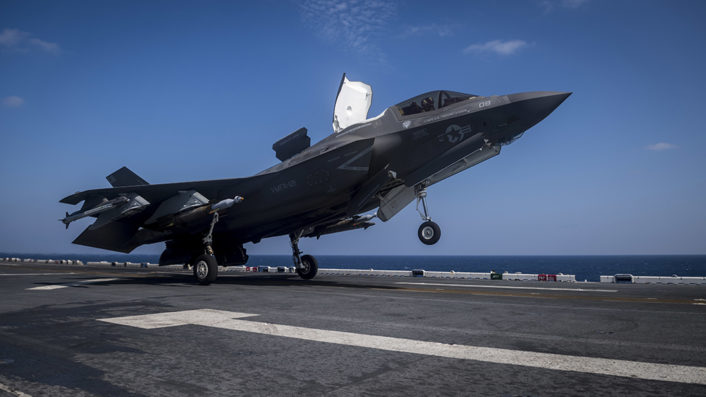
Back to the “Beast Mode”, F-35B have launched from the flight deck of amphibious assault ship USS America (LHA 6) with inert 500-pound GBU-12 Paveway II laser-guided test bombs during operational testing and the third phase of developmental testing for the STOVL stealth aircraft conducted by Marine Operational Test and Evaluation Squadron 1 (VMX-1), Marine Fighter Attack Squadron 211 (VMFA-211) and Air Test and Evaluation Squadron 23 (VX-23) in 2016. Still, the ones just released are probably the very first images of the aircraft launching in “Beast Mode” operationally.
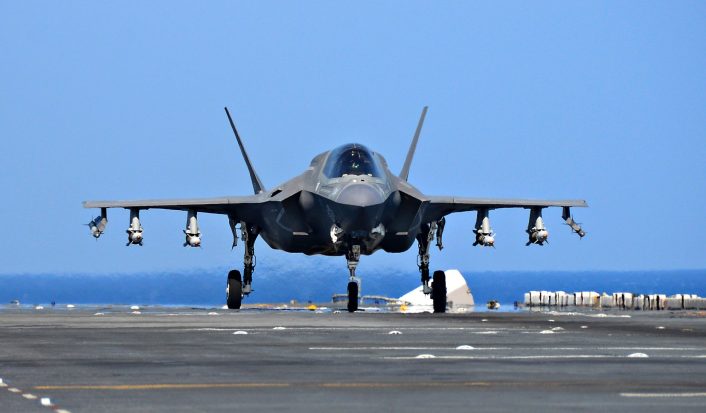
According to a Pentagon test office document recently obtained by Bloomberg, “Durability testing data indicates service-life of initial F-35B short-takeoff-vertical landing jets bought by Marine Corps “is well under” expected service life of 8,000 fleet hours; “may be as low as 2,100″ hours.”
This would mean that some of the early F-35B jets would start hitting service life limit in 2026.

